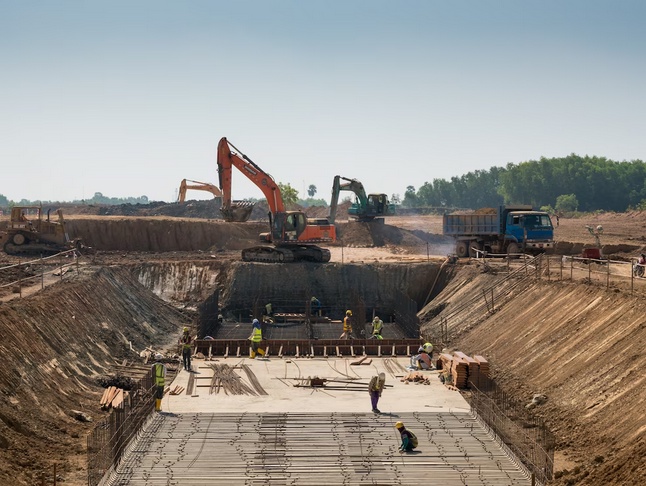Introduction:
In the dynamic realm of construction, the art of concrete pumping has emerged as a transformative practice, revolutionizing the way concrete is placed and contributing to more efficient and seamless construction processes. This comprehensive guide delves into the intricacies of concrete pumping, exploring its techniques, benefits, and the ways it has elevated construction practices beyond the traditional pour.
Understanding Concrete Pumping:
Concrete pumping involves the use of specialized equipment to transfer liquid concrete from a mixing truck to the desired location on a construction site. This method deviates from the conventional approach of manually pouring concrete, offering a range of advantages that have positioned it as a cornerstone in modern construction practices.
Techniques of Concrete Pumping:
-
Boom Pumps: Boom pumps are versatile machines equipped with an articulating arm or boom. They are ideal for reaching high or challenging areas on construction sites. The boom can be extended and maneuvered to place concrete precisely where it is needed, making it a valuable tool for projects with complex structures.
-
Line Pumps: Line pumps are more compact and suitable for projects with limited space. They use a series of pipes to transport concrete from the mixing truck to the placement location. Line pumps are well-suited for horizontal pumping over longer distances and are effective for smaller-scale construction projects.
-
Concrete Trailer Pumps: Concrete trailer pumps are portable units mounted on a trailer for easy transportation. They offer a cost-effective solution for smaller construction projects and are capable of pumping concrete at high volumes.
Benefits of Concrete Pumping:
-
Enhanced Efficiency: Concrete pumping significantly enhances construction efficiency by streamlining the placement process. The ability to transport concrete over long distances and to elevated locations with precision minimizes the time and labor required for concrete placement.
-
Precision and Accuracy: The precision afforded by concrete pumping is unparalleled. The controlled flow and placement of concrete ensure that it reaches its intended location with accuracy, minimizing waste and contributing to the overall quality of the construction.
-
Reduced Labor Requirements: Manual concrete pouring involves significant labor, which can be mitigated with the use of concrete pumps. By minimizing the need for manual handling of heavy concrete loads, these pumps enhance safety on the construction site and allow skilled labor to focus on other critical tasks.
-
Versatility in Application: Concrete pumping is versatile and adaptable to various construction scenarios. Whether it's a high-rise building, a foundation pour, or a project in a confined space, different types of pumps can be employed to meet the specific requirements of the job.
-
Cost Savings: While there is an initial investment in equipment and pump hire, the long-term cost savings associated with concrete pumping are significant. Reduced labor requirements, minimized material wastage, and faster project completion contribute to overall cost-effectiveness.
-
Improved Safety: Concrete pumping enhances safety on the construction site by reducing the risks associated with manual handling of heavy loads. It minimizes the physical strain on workers, contributing to a safer working environment.
Mastering the Art of Concrete Pumping:
-
Equipment Selection: Choosing the right type of concrete pump for a project is crucial. Consider factors such as the scale of the project, the site's topography, and any access restrictions to determine whether a boom pump, line pump, or trailer pump is most suitable.
-
Operator Training: Proper training for those operating the concrete pump is essential. Operators should be well-versed in the equipment's controls, safety protocols, and troubleshooting procedures to ensure smooth and safe operations.
-
Site Planning and Logistics: Careful planning of the construction site is paramount for successful concrete pumping. Consider factors such as access points, set-up locations for the pump, and coordination with concrete suppliers to optimize workflow.
-
Regular Maintenance: Regular maintenance of the concrete pump is crucial for preventing breakdowns and ensuring continuous operation. This includes checking the condition of hoses, cleaning the pump after each use, and addressing any issues promptly.
Conclusion:
In conclusion, mastering the art of concrete pumping goes beyond the traditional methods of concrete placement, offering a transformative approach that enhances efficiency, precision, and safety in construction. The benefits of concrete pumping, including enhanced efficiency, precision and accuracy, reduced labor requirements, versatility in application, cost savings, and improved safety, underscore its significance in modern construction practices. By adopting concrete pumping techniques and following best practices, construction professionals can elevate their projects to new levels of seamless execution and efficiency.


No comments yet